Guide to Types of Nuts
The nut is a fruit of some plants. As a rule, it has an edible kernel and a hard shell. In the botanical sense, it’s the hard shell that doesn’t open up itself to release seeds that defines the nut. For example, hazelnuts, chestnuts, and acorns are nuts. However, in the culinary sense, nuts include any edible kernel with a hard structure. And that’s what our article is going to tell you about.
5-Minute Crafts wants to tell you about 10 popular types of nuts that you can often find on store shelves.
1. Almonds
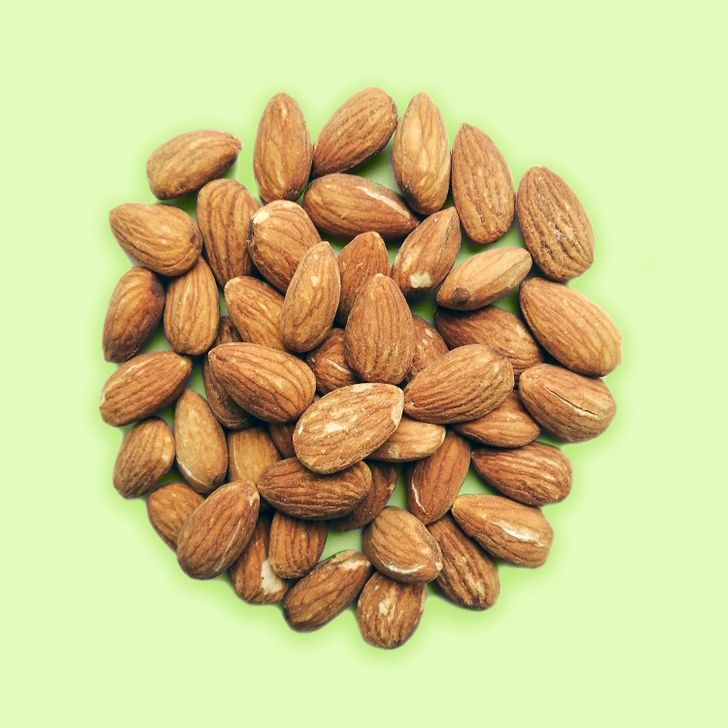
The almond is a tree native to Iran and surrounding countries. The edible fruits of this tree are called almonds as well. This plant is widely cultivated around the world. In 2019, global almond production was 3.5 million tonnes, with the largest producing countries being the United States, Spain, Iran, Turkey, and Morocco.
Almonds are sold both with shells and without them. Also, you can find blanched almonds in stores. These are almonds without shells that have been treated with hot water to soften the seed coat. It is then removed and only the white almond seeds are left.
Although almonds are often eaten on their own, raw, or fried, they are also a component of various dishes. For example, this nut is added to muesli and used to prepare a variety of desserts like pastries, cakes, nougat, cookies, and marzipan. Almonds are also used to make flour, sugar syrup, and vegetable milk.
2. Hazelnuts
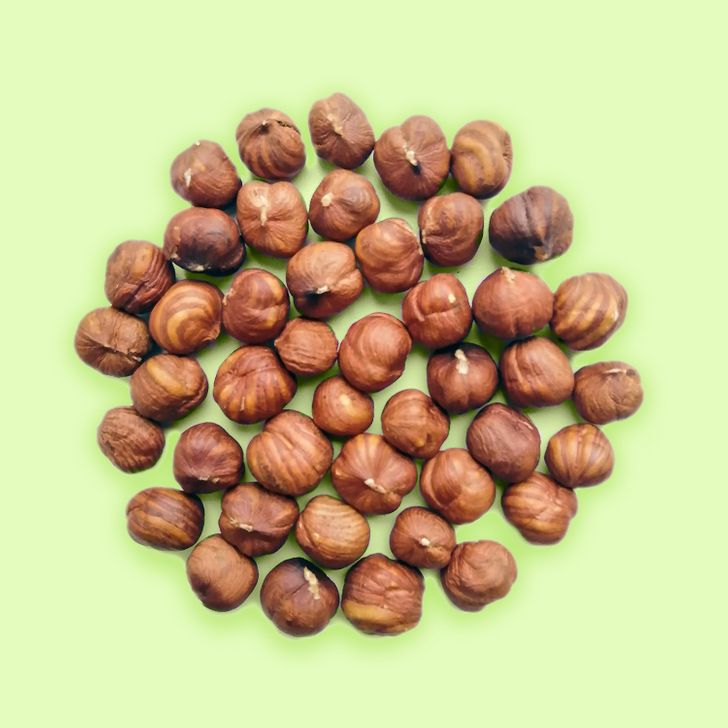
Hazelnuts refer to true nuts. They are the fruits of a species from the genus Corylus, native to temperate regions of the Northern Hemisphere. The kernels are surrounded by a hard shell inside which there is the seed that has a thin, dark brown skin.
In 2019, the global production of hazelnuts was 1.1 million tonnes. Turkey is the main supplier of this nut, followed by Italy, Azerbaijan, the United States, Chile, and China.
Hazelnuts are eaten raw or fried. They are also used in baking, desserts, and a variety of confectionery products. For example, pralines, chocolate bars, truffles, and cocoa butter can be cooked with hazelnuts. In addition, this nut is used to produce vegetable oil with a rich aroma, which is used for culinary purposes.
3. Walnuts
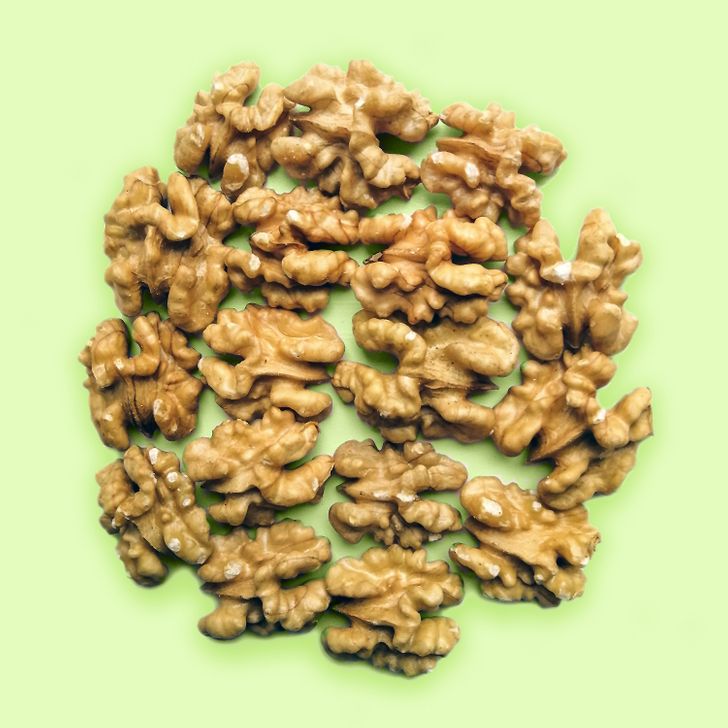
Walnuts are a fruit from any tree of the genus Juglans. The 2 most widespread types of walnut are the Persian (Juglans regia), native to Iran or the black walnut (Juglans nigra), native to eastern North America.
In 2019, the global production of in-shell walnuts was 4.5 million tonnes. Mostly they were grown in China, as well as in the United States and Iran.
The walnut fruit is an edible drupe seed with a soft green husk. They are sold with or without shells and are usually eaten on their own raw, toasted, or pickled. Also, walnuts are often added to muesli and various desserts such as baklava, brownies, and warm pies. In addition, walnuts can be found in some meat dishes in Iranian cuisine.
4. Pecans
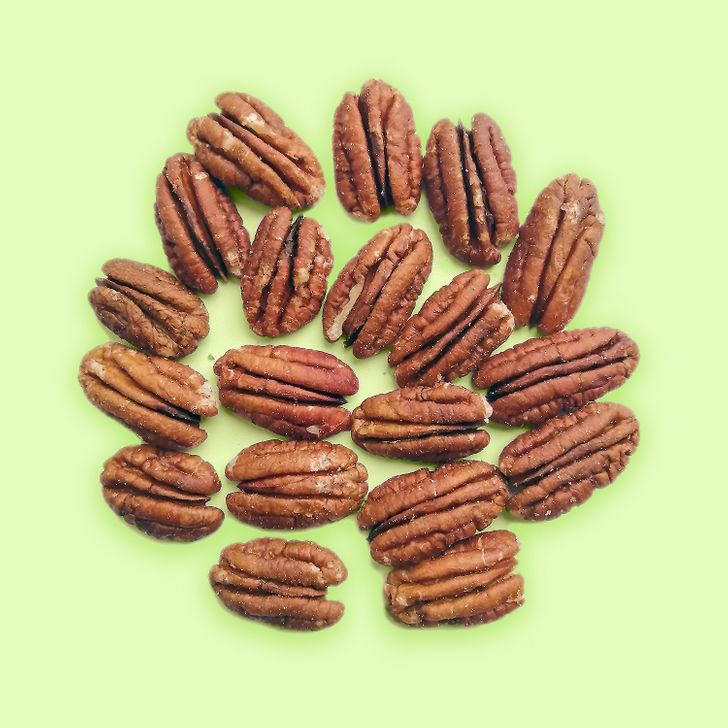
The pecan is a species of hickory native to the southern United States and northern Mexico. It’s from there that 2 to 3 tonnes of fruit from this tree, which look like walnuts, are picked up annually. Just like walnuts, pecans are an edible drupe seed with a soft green husk.
Pecans are eaten fresh or used in cooking, especially for making desserts like cookies, cakes, pies, ice cream, and pralines.
5. Cashews
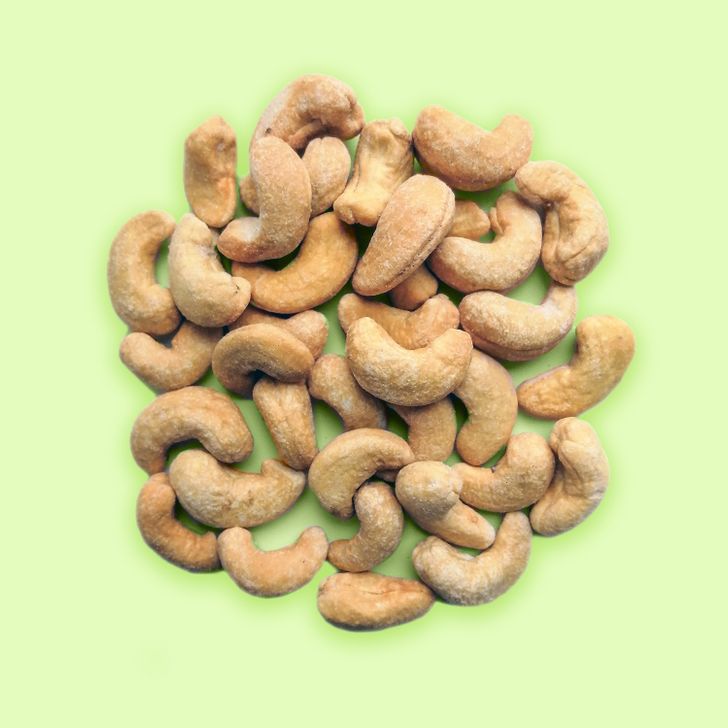
Cashews are fruits from an evergreen tree with the same name that is native to Brazil and Venezuela. At the beginning of the 16th century, it spread throughout the world and is now actively cultivated in other countries like the Ivory Coast and India which are the main producers of cashews nowadays. In 2019, the total world cashew production was about 4 million tons.
The fruit of the cashew tree has a thick shell and seeds and grows at the apex of a fleshy stalk known as a cashew apple. The latter can also be used as food but its seeds, once cleaned from the shell, are more popular. They are actively used in Indian, Chinese, Filipino, and Thai cuisines. They are eaten raw or fried and are also added to desserts and curry pastes. In addition, cashew kernels are used for making vegetable milk.
6. Macadamias
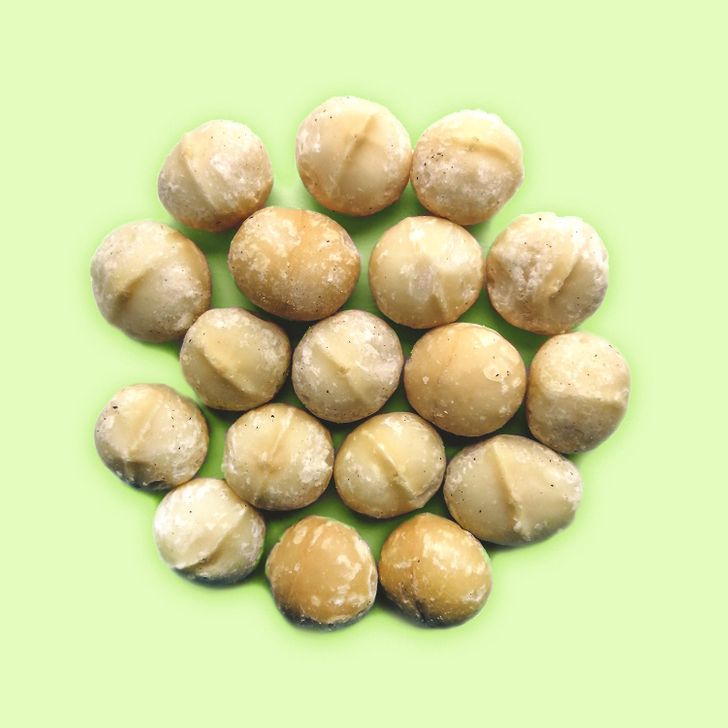
The macadamia is a nut that is native to Australia. It grows on a tree with the same name from the Proteaceae family. The fruit is a hard, woody, globose follicle with a pointed apex, that has 1-2 seeds inside. They are eaten raw or used to make vegetable oil. They are used for frying food and for dressing salads.
Starting from the end of the 19th century, macadamia nuts started to be cultivated in other countries. In 2018, the total world production of these nuts was 200,000 tons. South Africa is the largest supplier of macadamias, and it is followed by Australia and Kenya.
7. Brazil nuts
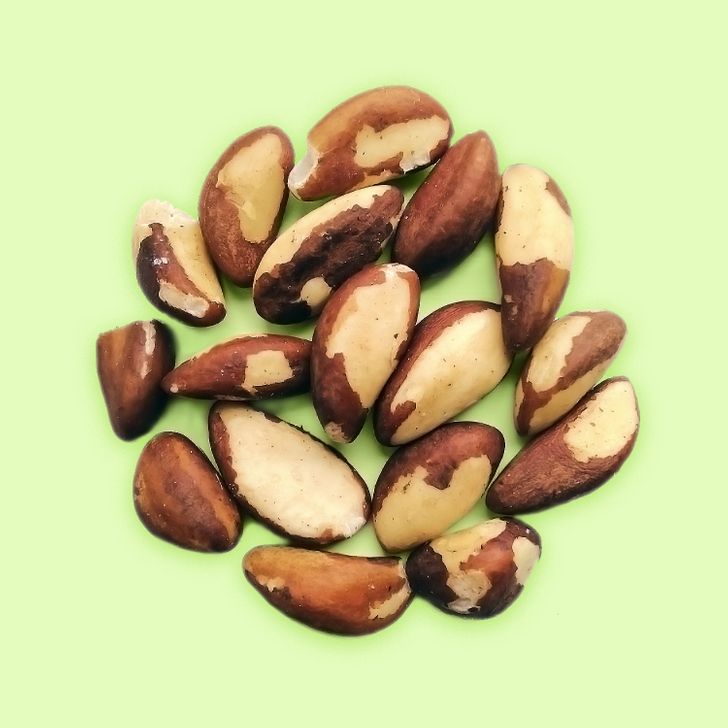
The Brazil nut is a fruit from a tree with the same name from the family Lecythidaceae. It is native to South America, where nuts are not cultivated, but harvested directly from the wild. In 2019, the global production of Brazil nuts was 78,000 tons, most of which were harvested in Brazil and Bolivia, in the Amazon rainforest.
The fruits of the Brazil nut are drupe hard-shelled seeds that are stored in a hard, woody capsule. One capsule can fit from 8 to 24 nuts. They are eaten raw or added to desserts such as the Brazilian nut cake, which is popular in the Amazon region.
8. Pistachios
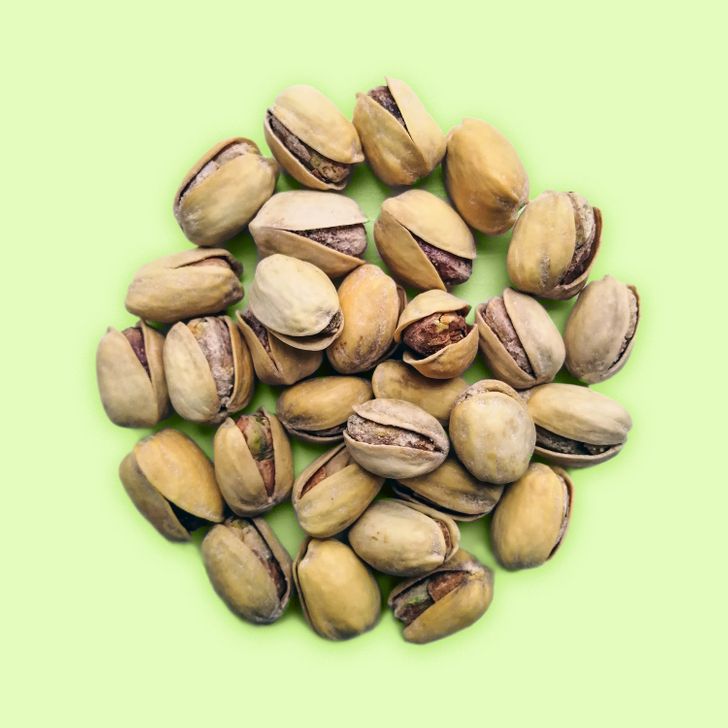
Pistachios are the fruits of the pistachio tree from the Sumac family. They originate from Central Asia and the Middle East. In 2019, the global production of pistachios was about 0.9 million tons. Most of these nuts were grown in Iran and the United States, and the rest in China, Turkey, and Syria.
The fruits of the pistachio tree are drupes, containing a single seed in a cream-colored shell. When ripe, they abruptly split open and start to look the way we are used to seeing them.
The kernels of pistachios are eaten whole, either fresh or roasted. They are also added to all kinds of desserts, such as ice cream, baklava, chocolate, halva, Turkish delight, and biscuits. In addition, pistachios are an ingredient in the Italian sausage called mortadella.
9. Pine nuts
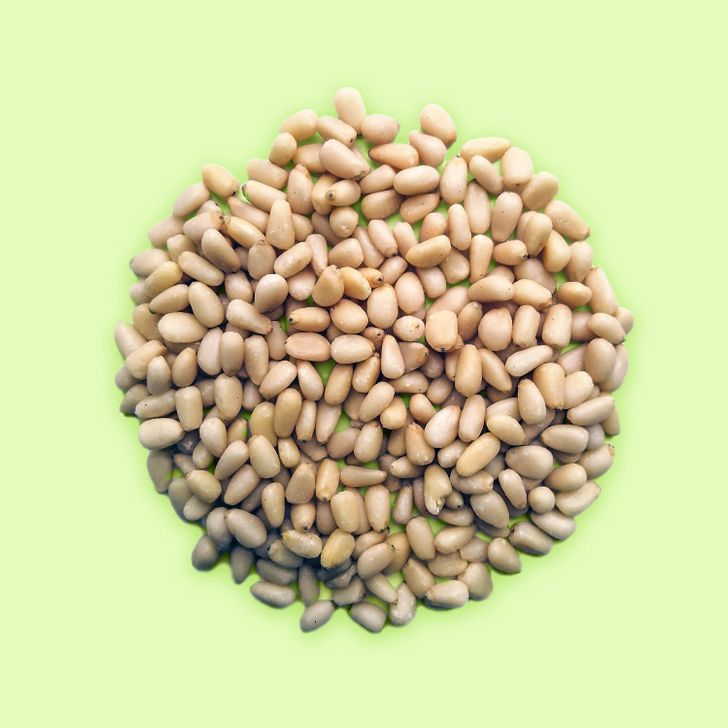
Pine nuts are the seeds of several types of pine trees that are common in the Northern Hemisphere. They are extracted from pine cones and consumed raw. They are also often added to meat, fish, salads, and vegetable dishes. A variety of desserts are also prepared with these nuts. Moreover, they are the most important ingredient in pesto sauce in Italian cuisine.
Also, there is a coffee made of pine nuts. It is popular in the Southwestern United States, especially in the state of New Mexico, and is a dark roasted coffee with a deep nutty flavor.
The world production of pine nuts is not huge. For example, in 2017 it was only 23,600 tons. The main producing countries were South Korea, Russia, China, Pakistan, and Afghanistan.
10. Peanuts
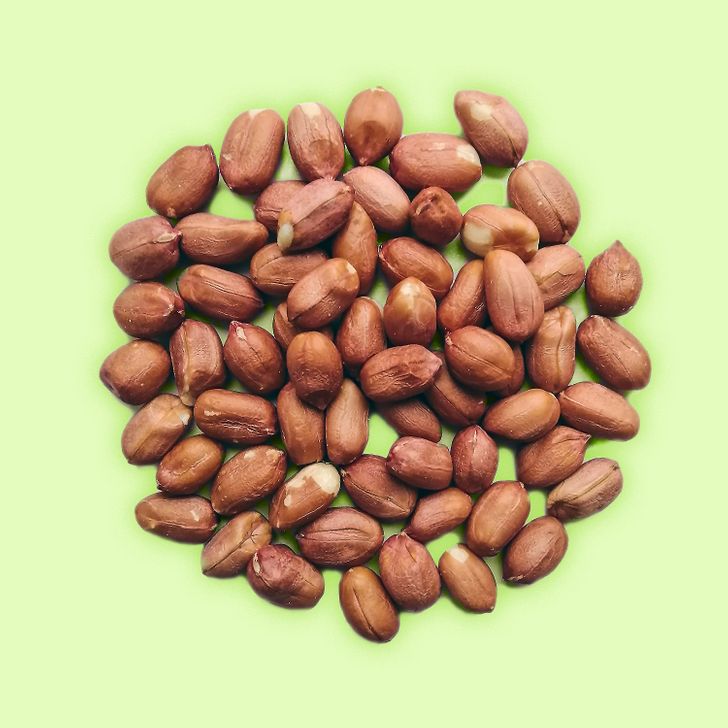
The peanut is an annual plant that belongs to the botanical family Fabaceae. Its fruits look like a papery pod containing one or more nut-like seeds. Peanuts are native to South America but are currently cultivated in many countries with tropical climates. World peanut production in 2019 was 49 million tonnes. China is the largest supplier, followed by India, Nigeria, Sudan, and the United States.
Peanuts are sold in-shell or without shells and are eaten raw, roasted, and sometimes boiled. They are used to produce peanut butter and flour, and are also added to a wide variety of dishes like sauces and desserts typical of Latin American, Asian and African cuisines.